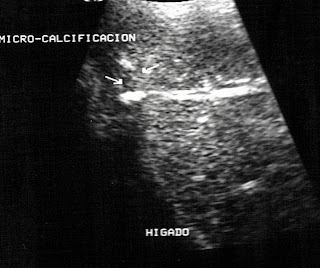Glomus Carotideo
Masculino 91 años de edad, enviado por cirujano maxilo-facial por presentar masa dura,no dolorosa,inmóvil, localizada en área sub-auricular derecha. A la palpación la consistencia es pétrea. En la exploración sonografica se aprecia masa hipoecogenica,heterogenea,de limites precisos,mide aprox 4,48 X 3,12 cm. El Doppler Color muestra flujo vascular discreto en la periferia. Al aplicar la Elastografia encontramos un score 2 de Ueno,por lo cual presumimos que se trata de una lesión benigna. La masa muestra cierta relacion con la arteria Carótida homolateral. Se aprecian algunas adenopatias en la cadena ganglionar anterior. No se detectan signos de litiasis u otras patologías en la glándula Parotidas y Submaxilar izquierda.El musculo esternocleidomastoideo izquierdo luce estructuralmente normal.Se concluye con el diagnostico de Glomus Carotideo, lesión benigna, infrecuente, se les llaman también lesiones para-ganglionares cervicales y representan el 0,3 % dentro de este tipo de lesiones. El mas frecuente entre los para-gangliomas es el Carotideo seguido del yugulo-timpánico y por ultimo el Vagal.
91-year-old male, sent by the maxillo-facial surgeon for presenting hard, non-painful, immobile mass, located in the right sub-auricular area. On palpation the consistency is stony. The sonographic examination shows a hypoechogenic mass, heterogeneous, with precise limits, measuring approx 4.48 X 3.12 cm. Color Doppler shows the discrete vascular flow in the periphery. When applying Elastography we found a score of Ueno 2, so we presume that it is a benign lesion. The mass shows a certain relationship with the homolateral carotid artery. Some lymph nodes in the anterior ganglionic chain are appreciated. No signs of lithiasis or other pathologies are detected in the Parotid and left Submaxillary gland. The left sternocleidomastoid muscle looks structurally normal. It concludes with the diagnosis of Carotid Glomus, a benign lesion, infrequent, they are also called cervical para-ganglionic lesions and represent 0.3% within this type of lesions. The most common among paragangliomas is the Carotid followed by the jugular-tympanic and finally the Vagal.
CAROTID GLOMUS
Ref










